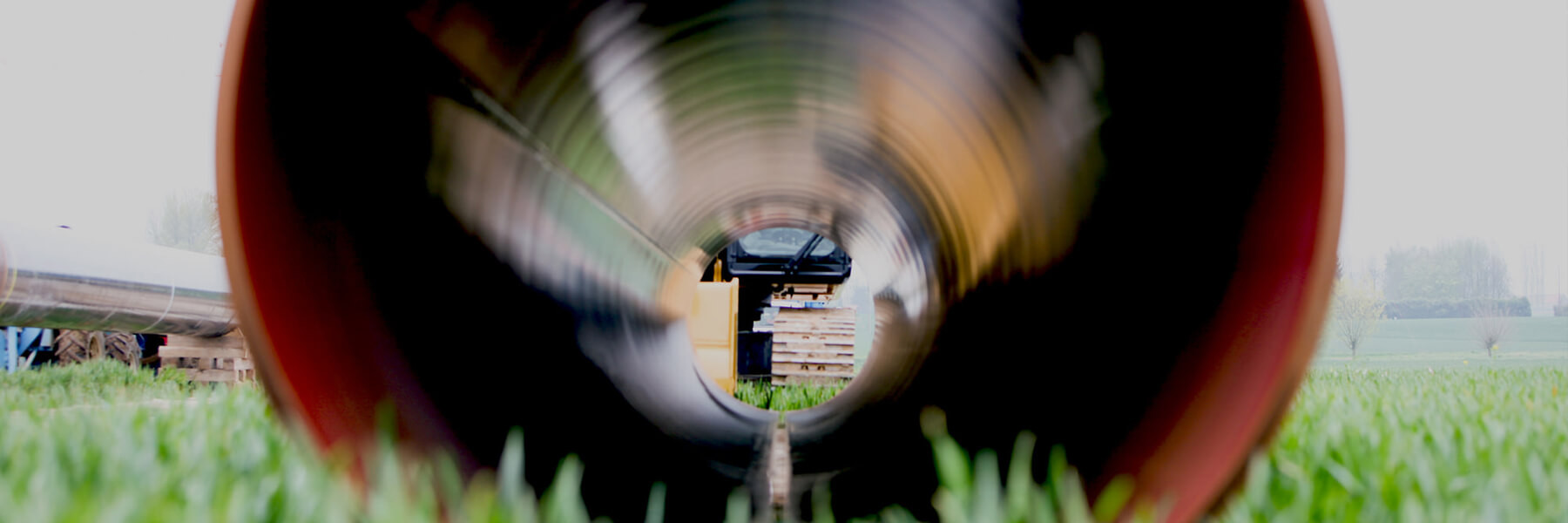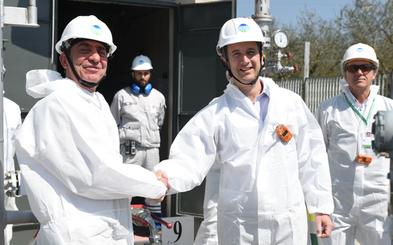INNOVATIVE PROJECTS PLATFORM
To efficiently build on its Members' actions to promote or contribute to innovative technologies, regulation and business models, and partnerships across the value chain, ENTSOG has created the Innovative Projects Platform to map TSOs’ projects and partnerships on Research, Development and Innovation (RDI) activities for the energy transition.
This public platform provides information and links to enable exchange of best practices applied at national level and in some cases, across borders through partnership efforts.
These innovative solutions focus on topics such as repurposing infrastructure for renewable gases and projects for hydrogen, CCS and CO2 transport, biogas, energy system integration. These innovative applications support the achievement of the current EU goals of reducing GHG emissions and reaching the decarbonisation goal of net-zero by 2050.
*Disclaimer: The content published on this page is information owned by TSOs and not by ENTSOG. It is therefore published on behalf of TSOs. Please note terms and conditions of use of the website (including article 7) are fully applicable to this page.
Technology
Discover here how technologies can optimise the usage of the grid, make digital layer connections and support decarbonisation of the EU gas system. Technology R&D has a vital role in the energy transition. ENTSOG Members (TSOs) are developing new and innovative technologies to offer sustainable solutions for the gas sector.
Regulation & Business Model
Stay informed on how ENTSOG Members (TSOs) engage in development of the new energy products and services to foster uptake of renewable and decarbonised gases into the grid.
Partnership
Look at new partnerships and initiatives formed by ENTSOG’s Members (TSOs). They are actively working together as well as with various stakeholders on projects aimed at decarbonisation of the gas sector and of the whole EU economy.
Hydrogen
Hydrogen is a gas under standard conditions and there are also different hydrogen derivatives, such as ammonia and synthetic electrofuel. sHydrogen can be produced from diverse process technologies, such as electrolysis and steam-methane reforming (with or without carbon capture and permanent storage of this carbon to reduce emissions).
Repurposing for Renewable Gases
Repurposing of pipelines for renewable gases transport (e.g. hydrogen) is a cost effective way to meet decarbonisation goals and can be undertaken without compromising the ability of the natural gas network to ensure security of supply.
Biogas
Biogas is obtained via the anaerobic decomposition of the organic matter. After the process of upgrading, biogas becomes biomethane with the same quality standard as natural gas and can be transported via the existing grid infrastructure.
CCS and CO2 Transport
Carbon Capture and storage is the process of capturing CO2 from a set of possible sources, such as for example fossil fuel power plants, transporting it to a storage site, and depositing it underground on a permanent basis. The aim is to prevent the release of CO2 into the atmosphere.
Energy System Integration
Integrated infrastructure planning for electricity and gases is essential to support the decarbonisation of the energy system sector, particularly for facilitating the transport of renewable gases like hydrogen.
CNG
Compressed Natural Gas (CNG) is a fuel source that is made from compressing natural gas to less than 1% of its standard atmospheric volume. CNG combustion produces fewer climate-impacting gases than other fossil fuels.
Digitalisation
Digitalisation can bring various benefits to day-to-day operations such as enhanced control over the gas quality and cost reductions. TSOs look at data-driven solutions to boost performance, efficiency and competitiveness.
Heating & Cooling
Cutting the energy consumption in heating and cooling in buildings and industry can be achieved through various technologies. TSOs are working on developing cost-efficient solutions for the decarbonisation of this sector.
Certification of green gases
To ensure the cross-border scale up and tradability of renewable, decarbonised and low-carbon gases. This can be achieved via pan European Guarantees of Origin and Certification Schemes.
Gas Networks Ireland
Biomethane production study Ireland
In October 2021 GNI published a ‘Sustainability of Biomethane Production in Ireland’ report undertaken by Devenish Nutrition and KPMG Sustainable Futures, which drew on existing academic research, as well as data and on-farm experience from the Dowth Research Farm in Co. Meath. The report concluded that agriculturally produced biomethane can be delivered sustainably and at scale to help reduce on-farm emissions and decarbonise Ireland’s energy system without reducing the national herd, disrupting food production, intensifying agricultural activities or impacting on biodiversity.
CREOS
SMARTY
Creos is making extensive investments in its natural gas networks. SMARTY is a new smart gas meter which measures the gas consumption in each home. Whether via customer's wired or wireless gas meter, the meter data is always transferred to your smart electricity meter and then, via the existing electricity network, to the central system managed by Luxmetering and finally to the gas supplier. This process is referred to as communication via power line carriers.
Contact: yves.reckinger@creos.net
OGE
GET H2 Nukleus
The GET H2 partners BP, Evonik, Nowega, OGE and RWE Generation want to jointly build the first publicly accessible hydrogen infrastructure. The GET H2 Nukleus project combines the production of green hydrogen with industrial customers in Lower Saxony and NRW. The approximately 130-kilometer network from Lingen to Gelsenkirchen will be the first H2 network in the regulated area with non-discriminatory access and transparent prices.
TEREGA
RINGS
Research on the Injection of New Gases into Storage facilities (RINGS) is a research and development partnership to study the behaviour of biomethane and hydrogen when mixed with natural gas in deep aquifers, with a view to storing them effectively. In partnership with Storengy / University of Pau / CNRS / Carnot Institute / SNAM (observer) / ENAGAS (observer).
Ontras
Energy Park at BAD LAUCHSTÄDT
Hydrogen is produced by a 35 MW electrolyser, which is directly connected to a wind farm. The pure hydrogen is stored in a nearby salt cavern. The transport between the underground storage and the end users for the hydrogen inside an existing industrial area is provided by a converted natural gas pipeline.
Contact: Eric.Tamaske@ontras.com
Fluxys
Ghent Carbon Hub
Fluxys, ArcelorMittal Belgium and North Sea Port have started a feasibility study for the Ghent Carbon Hub project, an open-access CO2 storage and liquefaction hub in the Ghent part of North Sea Port.
Besides the use of carbon-neutral energy, carbon capture, utilisation and storage (CCUS) is essential for CO2 intensive industries to achieve net zero emissions, especially in hard-to-abate sectors with processes inherently generating CO2 emissions.
SNAM RETE GAS S.P.A.
Testing of the H2NG supply in Contursi Terme
Snam has launched its experiment of introducing a 5% hydrogen and natural gas blend into the Italian gas transmission network. The experiment, the first of its kind in Europe, is being conducted in Contursi Terme, and involves the supply of H2NG (a blend of hydrogen and gas) to two industrial companies in the area: a pasta factory and a mineral water bottling company.
Contact: dina.lanzi@snam.it
GASUNIE
HyNetherlands
Large-scale production, transport, storage and application of green hydrogen. The Northern Netherlands is a suitable location for a large-scale hydrogen chain because of the presence of green electricity, the good and extensive existing gas network, the gas storage options and the presence of large industrial users of hydrogen. In partnership with ENGIE and EMMTEC.
DESFA, TAP IPCEI
WHITE DRAGON
The objective of the project is to gradually replace the lignite power plants of Western Macedonia and transition to clean energy production and transmission, with the ultimate goal of fully decarbonising Greece's energy system. The "White Dragon" project plans to use large-scale renewable electricity to produce green hydrogen by electrolysis in Western Macedonia. This hydrogen would then be stored and then the transport and export potential of hydrogen through TAP Pipeline connecting Greece to European markets. Partnership with DEPA, Advent Technologies, DAMCO ENERGY, PPC, HEP, MOTOR OIL, TERNA, CORINTH PIPEWORKS.
Gasunie
Magnum power plant
Nuon / Vattenfall, Gasunie New Energy and the Norwegian energy company Equinor are working together on the conversion of the Magnum power station in Eemshaven. It is planned that the first three units of the power plant that are currently still powered by natural gas will be converted to run on hydrogen between 2023-2025. The Magnum power plant will deliver 440 megawatts per unit.
Contact: k.g.wiersma@gasunie.nl








